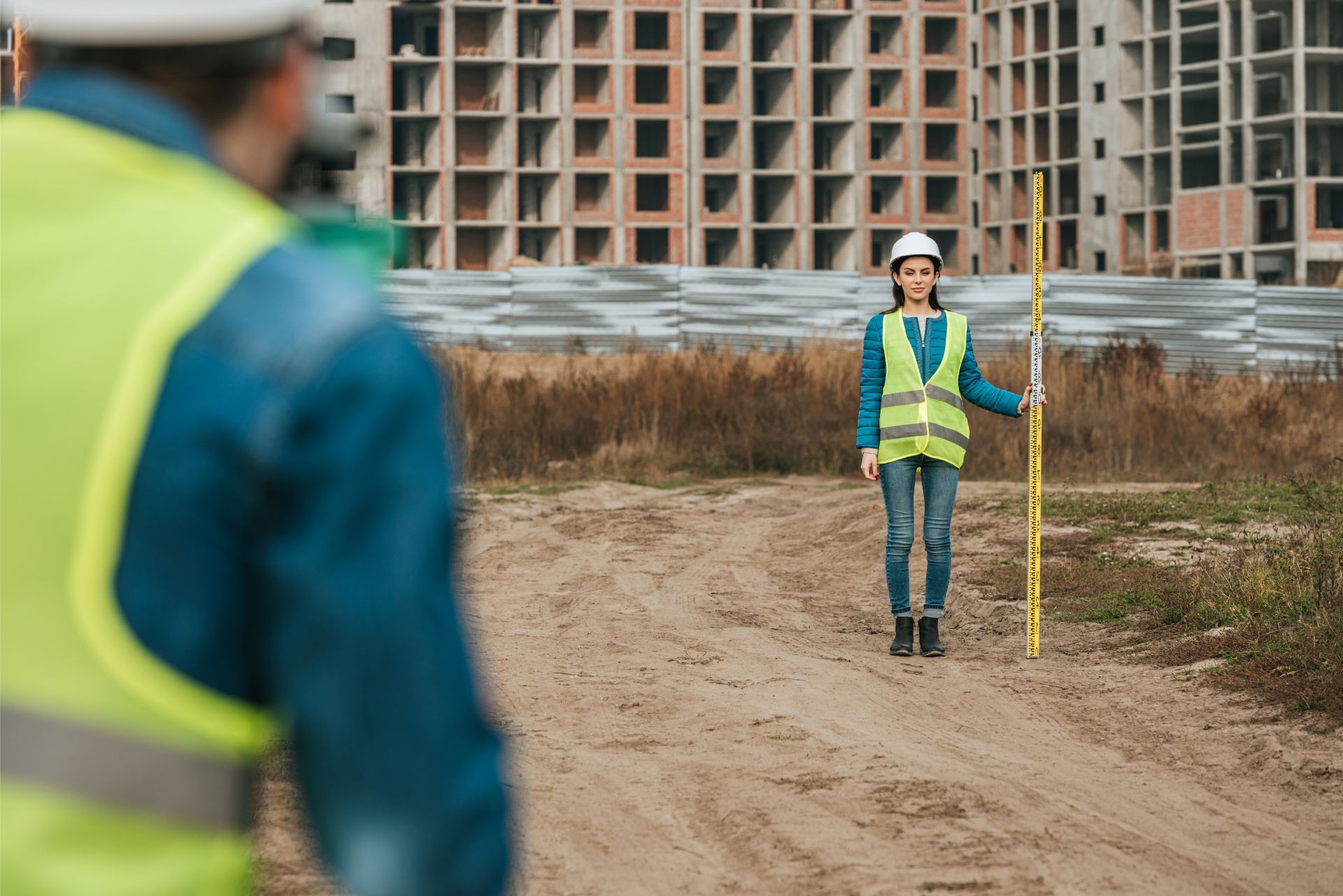When it comes to real estate development in Florida, understanding the intricacies of subdivision bonds is crucial for developers, builders, and investors alike. A subdivision bond is a type of surety bond that ensures the completion of public improvements in a subdivision, protecting both the local government and the property owners. This article will delve into the various aspects of Florida subdivision bonds, including their purpose, requirements, and the process involved in obtaining one.
What is a Florida Subdivision Bond?
A Florida subdivision bond is a legally binding agreement that guarantees the completion of specific improvements within a subdivision, such as roads, sidewalks, drainage systems, and other essential infrastructure. These bonds serve as a financial safety net for municipalities, ensuring that developers fulfill their obligations to the community. By providing this assurance, subdivision bonds play a crucial role in the planning and development process, fostering trust between developers, local governments, and residents.
Purpose of a Subdivision Bond
The primary purpose of a subdivision bond is to ensure that developers complete the necessary public improvements as outlined in their development plans. If a developer fails to meet these obligations, the bond provides a financial remedy for the local government to complete the work. This protects the interests of future homeowners and ensures that the community remains safe and functional. Additionally, subdivision bonds can encourage responsible development practices, as developers are more likely to adhere to timelines and quality standards when they know that financial repercussions are at stake.
Types of Improvements Covered
Subdivision bonds typically cover a range of public improvements. These may include:
- Road construction and paving
- Sidewalks and pedestrian pathways
- Stormwater management systems
- Street lighting and signage
- Landscaping and erosion control
By ensuring these improvements are completed, subdivision bonds help maintain the quality of life in newly developed areas. Furthermore, they can also encompass utility installations, such as water and sewer lines, which are vital for the daily functioning of any residential community. The presence of these essential services not only enhances property values but also contributes to the overall well-being of residents, making it imperative that they are installed correctly and on schedule.
Moreover, subdivision bonds can vary in terms of their duration and the amount of coverage they provide, depending on the scope of the project and local regulations. In some cases, municipalities may require bonds to remain in effect until all improvements are fully completed and accepted by the local government. This ensures that developers remain accountable throughout the entire construction process and that any unforeseen issues can be addressed promptly, safeguarding the interests of the community at large.

Who Needs a Subdivision Bond?
In Florida, subdivision bonds are typically required for developers and builders who are planning to create new residential or commercial subdivisions. Local government agencies often mandate these bonds to protect the interests of the community and ensure that necessary infrastructure is in place before homes or businesses are occupied. These bonds serve as a financial guarantee that the developer will complete the required improvements, such as roads, utilities, and landscaping, in accordance with local regulations and standards.
Developers and Builders
Developers and builders are the primary parties required to obtain subdivision bonds. They must provide a bond to the local government before beginning construction to guarantee that they will fulfill their obligations regarding public improvements. This requirement helps to ensure that developers are financially responsible and committed to completing their projects on time. The bond amount is typically based on the estimated cost of the improvements, which means that developers must conduct thorough assessments to determine the financial scope of their projects. This not only protects the municipality but also instills confidence in potential buyers who wish to invest in the new properties.
Homeowners Associations
In some cases, homeowners associations (HOAs) may also be involved in the subdivision bond process. If an HOA is formed before the completion of public improvements, it may be required to obtain a bond to ensure that the developer fulfills their obligations. This can provide additional protection for homeowners within the community. By having an HOA involved, residents can have a say in the development process and the standards that will govern their community, which can lead to better maintenance and management of common areas once the project is completed. Furthermore, the presence of an HOA can enhance property values by ensuring that the aesthetic and functional aspects of the subdivision are upheld over time.
Local Government Agencies
Local government agencies play a crucial role in the subdivision bond process as they are responsible for overseeing the compliance of developers with municipal codes and regulations. These agencies evaluate the plans submitted by developers and determine the necessary improvements required for the subdivision. They also assess the financial viability of the bond, ensuring that it adequately covers the costs of the improvements. This oversight helps to maintain the integrity of the community and ensures that all developments contribute positively to the local infrastructure. Additionally, local governments may also monitor the progress of construction to ensure that the improvements are made in a timely manner, further safeguarding the interests of future residents.
Requirements for Obtaining a Subdivision Bond
Obtaining a subdivision bond in Florida involves several steps and requirements. Understanding these can help streamline the process and ensure compliance with local regulations.
Application Process
The first step in obtaining a subdivision bond is to submit an application to the local government or relevant authority. This application typically includes detailed information about the proposed subdivision, including:
- Site plans and development specifications
- Estimated costs for public improvements
- Timeline for project completion
Once the application is submitted, the local government will review the plans and determine the necessary bond amount based on the estimated costs of the improvements. During this review process, officials may also conduct site visits to assess the feasibility of the proposed plans and ensure they align with zoning laws and community standards. Developers should be prepared to address any concerns or modifications suggested by the reviewing authority, as this can significantly impact the approval timeline.
Bond Amount Determination
The bond amount is generally calculated based on the estimated cost of the public improvements outlined in the development plans. Local governments may have specific formulas or guidelines for determining this amount. It is essential for developers to provide accurate estimates to avoid delays in the bonding process. Additionally, developers should consider potential fluctuations in material costs and labor rates, as these can affect the final bond amount. Engaging with experienced consultants or engineers can help ensure that all estimates are comprehensive and reflective of current market conditions.
Choosing a Surety Company
After determining the bond amount, developers must select a surety company to issue the bond. It is crucial to choose a reputable company with experience in subdivision bonds. The surety company will evaluate the developer's financial standing and project plans before issuing the bond, ensuring that the developer is capable of fulfilling their obligations. Developers should conduct thorough research on potential surety companies, reviewing their financial ratings, customer feedback, and claim history. Establishing a good relationship with the surety provider can also be beneficial, as they may offer guidance throughout the bonding process and help navigate any challenges that arise.
The Bonding Process
The bonding process involves several key steps that developers must follow to secure a subdivision bond successfully. Understanding each step can help ensure a smoother experience.
Submitting Required Documentation
Once a surety company is selected, the developer will need to submit various documents, including financial statements, project plans, and any other information required by the surety. This documentation helps the surety assess the risk involved in issuing the bond. It is crucial for developers to provide accurate and comprehensive information, as any discrepancies or omissions could lead to delays or even rejection of the bond application. Additionally, developers may need to include details about the project's timeline, budget estimates, and any previous experience with similar developments, which can bolster their case for approval.
Underwriting and Approval
The surety company will conduct an underwriting process to evaluate the developer's financial stability and project feasibility. This may involve reviewing credit scores, financial history, and project details. If the surety company is satisfied with the assessment, they will approve the bond. During this phase, the surety may also seek input from industry experts or conduct site visits to better understand the scope and potential challenges of the project. This thorough evaluation not only protects the surety but also ensures that the developer is adequately prepared to meet the obligations outlined in the bond.
Issuance of the Bond
Once approved, the surety company will issue the subdivision bond. The developer must then submit the bond to the local government as part of the development approval process. This bond will remain in effect until all public improvements are completed and accepted by the local government. It is important for developers to keep track of the bond's terms and conditions, as any failure to adhere to these requirements could result in penalties or the bond being called. Furthermore, developers should maintain open communication with the surety company throughout the project, as changes in project scope or unforeseen challenges may necessitate adjustments to the bond or additional bonding requirements.

Duration and Release of the Bond
Understanding the duration and release process of a subdivision bond is essential for developers and builders. This ensures that they are aware of their obligations and the timeline for completing public improvements. A clear grasp of these elements can help prevent delays and financial penalties, ultimately leading to a smoother project execution and a positive relationship with local authorities.
Bond Duration
Subdivision bonds typically remain in effect until the developer has completed all required public improvements and the local government has accepted them. The duration can vary depending on the complexity of the project and the timeline established in the development agreement. For instance, a straightforward residential subdivision may have a shorter bond duration compared to a mixed-use development that includes extensive infrastructure improvements. Developers should also consider potential delays caused by weather, supply chain issues, or unforeseen site conditions, as these factors can extend the bond duration significantly.
Release of the Bond
Once all improvements are completed and accepted, the developer can request the release of the bond. This process involves submitting documentation to the local government, demonstrating that all obligations have been met. This documentation often includes inspection reports, certificates of completion, and any required maintenance agreements. Upon approval, the bond will be released, and the developer will no longer be financially liable for the improvements. However, it is important for developers to remain proactive during this phase; they should ensure that all necessary paperwork is in order and that they have addressed any potential concerns from local officials. Engaging with the local government throughout the project can facilitate a smoother release process and may even lead to quicker approvals, allowing developers to move on to their next projects with confidence.
Consequences of Not Obtaining a Subdivision Bond
Failing to obtain a subdivision bond can have serious consequences for developers and builders. Understanding these implications is essential for anyone involved in real estate development in Florida.
Legal Penalties
Local governments may impose legal penalties on developers who do not obtain the required subdivision bonds. This can include fines, delays in project approvals, and even legal action to enforce compliance. The financial repercussions can be significant, impacting the overall success of the development. Additionally, these legal hurdles can create a ripple effect, causing project timelines to extend and increasing costs due to prolonged labor and material expenses. Developers may also find themselves in a position where they must divert resources to manage legal disputes rather than focusing on the actual development process.
Financial Liability
Without a subdivision bond, developers may be held financially liable for any incomplete public improvements. This means that if the developer fails to complete the necessary infrastructure, the local government or homeowners may seek compensation to cover the costs of completing the work. This can lead to substantial financial losses and damage to the developer's reputation. Furthermore, the absence of a subdivision bond can deter potential investors and buyers, who may view the lack of compliance as a red flag. The perception of risk associated with a project lacking proper bonding can make it difficult to secure financing or partnerships, further complicating the developer's ability to move forward with future projects.
Impact on Community Relations
Not obtaining a subdivision bond can also strain relationships with the local community. Residents may become frustrated if public improvements are not completed, leading to dissatisfaction and distrust towards the developer. This negative sentiment can manifest in public opposition to future projects, making it increasingly challenging for developers to gain community support. Engaging with the community and demonstrating a commitment to fulfilling obligations through proper bonding can foster goodwill and pave the way for smoother project approvals and collaborations in the future.
Insurance Complications
In addition to the financial and legal ramifications, failing to secure a subdivision bond can complicate insurance coverage for the project. Many insurance providers require proof of bonding as a condition for coverage, and without it, developers may face higher premiums or even denial of coverage altogether. This can leave developers vulnerable to unforeseen liabilities and risks associated with construction, further exacerbating the financial strain of non-compliance. Ultimately, the absence of a subdivision bond not only jeopardizes the immediate project but can also have long-lasting effects on a developer's ability to operate effectively within the industry.
Common Misconceptions About Subdivision Bonds
There are several misconceptions surrounding subdivision bonds that can lead to confusion for developers and builders. Addressing these misconceptions can help clarify the importance of these bonds in the development process.
Myth: Subdivision Bonds Are Optional
One common misconception is that subdivision bonds are optional for developers. In reality, most local governments in Florida require these bonds as part of the development approval process. Failing to obtain a bond can result in significant legal and financial consequences.
Myth: All Surety Companies Are the Same
Another misconception is that all surety companies offer the same services and terms. In reality, surety companies can vary significantly in their underwriting criteria, fees, and customer service. It is essential for developers to research and choose a reputable surety company that meets their specific needs.
Conclusion
Florida subdivision bonds play a critical role in ensuring the successful completion of public improvements in newly developed areas. Understanding the requirements, processes, and implications of these bonds is essential for developers, builders, and homeowners alike. By securing a subdivision bond, developers can protect their investments, fulfill their obligations to the community, and contribute to the overall quality of life in Florida's growing neighborhoods.
As the real estate market continues to evolve, staying informed about subdivision bonds and their importance will be crucial for anyone involved in the development process. Whether you are a developer, builder, or prospective homeowner, understanding these bonds can help navigate the complexities of real estate development in Florida.
Article By: Ryan Spalding
Licensed Insurance Agent & Bond Specialist
Contact Us

